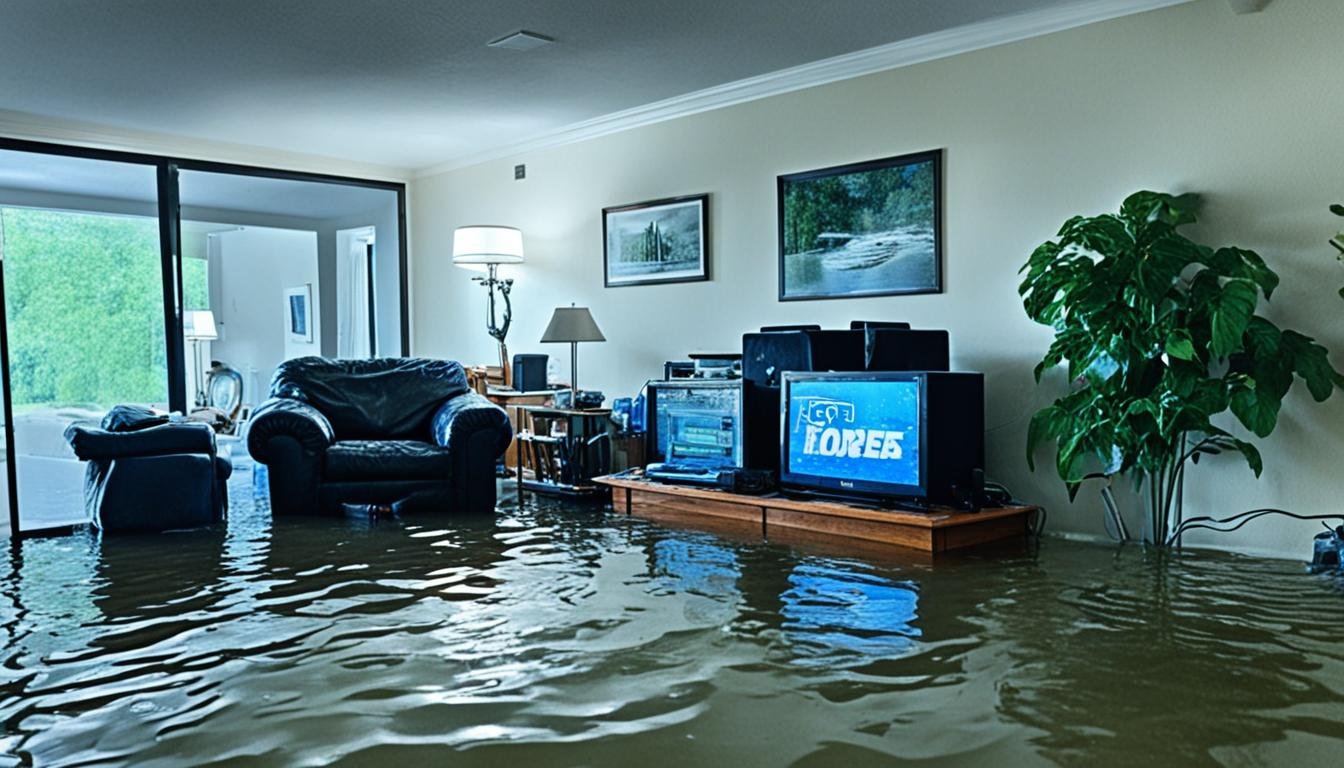Did you know that San Bernardino has strict regulations for water mitigation? Whether you own a residential property or a commercial building, understanding and complying with these regulations is crucial in protecting your property and the environment.
San Bernardino water mitigation guidelines outline the requirements and procedures for managing stormwater and implementing low impact development practices. These guidelines help prevent water pollution, mitigate flood risks, and conserve water resources.
Water damage regulations in San Bernardino cover a range of topics, from site assessment and pollutant control to developing a water quality management plan. It is important to familiarize yourself with these regulations to ensure compliance and prevent potential penalties.
Key Takeaways:
- San Bernardino has strict regulations for water mitigation to protect properties and the environment.
- Complying with these regulations is essential in preventing water pollution and mitigating flood risks.
- Understanding the guidelines for low impact development can help conserve water resources.
- Site assessment and pollutant control are key components of water damage regulations in San Bernardino.
- Developing a water quality management plan is necessary to ensure compliance with the regulations.
WQMP Development Process in San Bernardino
The Technical Guidance Document for Water Quality Management Plans in San Bernardino provides an overview of the WQMP development process. It is essential to understand this process to ensure effective stormwater management and low impact development.
When developing a WQMP in San Bernardino, it is important to work closely with the local jurisdiction. This collaboration ensures that the plan aligns with the specific requirements and regulations in the area. The document highlights the importance of preliminary and final WQMP submittals, as well as the need for thorough project evaluation.
The WQMP development process involves several steps that contribute to comprehensive site assessment. These steps include evaluating project location, analyzing topography, considering soils and geologic conditions, assessing groundwater impacts, and identifying potential environmental concerns.
Another critical aspect covered in the Technical Guidance Document is understanding pollutant sources and potential pollutants of concern. By identifying these sources, developers can implement appropriate strategies to minimize negative impacts on water quality.
Additionally, the document addresses hydromodification impacts and regional stormwater management. This information is crucial for managing stormwater runoff effectively and mitigating potential risks associated with increased flow rates and changes in hydrologic conditions.
By following the guidelines set forth in the Technical Guidance Document for Water Quality Management Plans, developers and other stakeholders can ensure compliance with the San Bernardino water quality management plan. This helps protect the environment and promotes sustainable stormwater management practices.
Implementing the recommended low impact development guidelines and incorporating the WQMP development process into project planning contributes to a more resilient and ecologically sensitive approach to water management in San Bernardino.
Project-Specific Performance Criteria in San Bernardino
The Technical Guidance Document for Water Quality Management Plans in San Bernardino provides project-specific performance criteria for low impact development (LID) and hydromodification control (HCOC). These criteria are essential for effectively managing stormwater and mitigating water damage in the area.
- The LID performance criteria include requirements for runoff volume, time of concentration, and peak runoff. These criteria ensure that LID practices effectively manage and reduce stormwater runoff, minimizing the risk of flooding and water damage.
- The HCOC performance criteria focus on controlling the impacts of hydromodification on receiving waters. They address issues such as increased erosion, channel instability, and changes in water flow patterns that can occur due to urban development. By implementing HCOC measures, the adverse effects of hydromodification can be mitigated.
The Technical Guidance Document also includes case studies that demonstrate the application of the performance criteria in real-world projects. These case studies provide valuable insights and practical examples of how the criteria can be implemented effectively.
Additionally, the document provides guidance on the evaluation and selection of LID best management practices (BMPs). It includes a hierarchy of BMP types, allowing project developers to choose the most suitable LID practices for their specific needs.

Overall, the project-specific performance criteria in San Bernardino play a crucial role in ensuring effective stormwater management and water mitigation. By adhering to these criteria, developers and property owners can contribute to a more sustainable and resilient water management system in the county.
Conclusion
Navigating the regulations and guidelines for water mitigation in San Bernardino can be complex, but it is essential for ensuring compliance and protecting your property. When faced with water damage, it’s crucial to seek the help of professionals who understand the specific regulations in the area and can provide the necessary expertise.
That’s where Water Damage Pros – San Bernardino comes in. As a trusted company specializing in water damage restoration, they have the knowledge and experience to guide you through the intricacies of the regulations and requirements in San Bernardino. Whether it’s assessing the damage, applying the right mitigation strategies, or obtaining the necessary permits, Water Damage Pros – San Bernardino can assist you every step of the way.
For more information and expert assistance with water mitigation in San Bernardino, you can contact Water Damage Pros – San Bernardino at 951-903-5429 or visit their website at sanbernardinowaterdamagerestoration.com. Trust the experts to help you navigate the regulations and restore your property to its pre-damaged condition.


